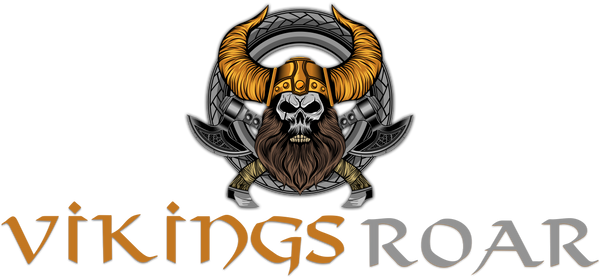
What Weapons Did The Vikings Use - A Short History
Share
As you learn about Viking weaponry and armor, there are a few things to bear in mind. First, free adult male Vikings were always armed; they hung their weapons by their beds at night, where they were easily accessible. Men in an honor-based community, such as the Vikings, were prepared to protect their honor and good name at any time. Feuds and duels were common in Viking times.
Weapons might be expensive since iron was difficult to obtain from the ground. Only the wealthiest Vikings would be able to afford the full arsenal of weapons, which included a sword, sax (a short sword), axe, spear, bow and arrows, shield, helmet, and chainmail. Poorer Vikings would be armed with an axe or a spear and a shield. The ax he used at the farm was available to even the lowest Vikings.
Women, children, and slaves did not carry weapons in general, though free women and children did carry the knives they used for farm work. Weapons of any kind were prohibited for slaves.
Viking Weapons: Swords
The sword was the most expensive weapon to produce since it required the most iron. Rich folks possessed swords, the most prized weapon. Swords were double-edged and roughly 35 inches long. Most were pattern-welded, which means that wrought iron strips and steel were twisted together and then hammered into a blade with a sharpened edge. Swords were frequently ornately adorned, and many bore names like Blood-hungry or Leg-biter. Vikings carried their swords in scabbards, which were worn over the shoulder and were constantly accessible to the right hand.

Viking Weapons: Axes and Spears
Spears were probably the most popular weapon, as they required the least quantity of iron to produce. They might be hurled or pushed towards the opponent. Spear heads occurred in a range of forms and sizes, ranging from long and thin spear heads to spear heads with a wing shape near the shaft. Spear heads were also constructed of iron, and many of them were ornamented. In warfare, bows and arrows were also employed.
Viking Weapons: Defensive Weapons
To protect themselves, all Viking men would carry a circular shield. The defensive weapons of a Viking were dictated by his wealth. A wealthy individual may also own chainmail and an iron helmet. Chainmail was difficult to construct and, no doubt, costly. Helmets were essentially an iron bowl that covered the skull and, in many cases, included a nose piece to protect the face. In the absence of chainmail, poorer Vikings wore thick, padded leather clothing that provided some protection against sharp weapons.
Viking shields may measure up to a meter in width. They were composed of riveted hardwood planks with a center hole for a hand grasp. Shields were also ornately adorned, with some depicting patterns or mythical figures.
Vikings were able to conquer large areas of England, France, and Russia with these basic yet powerful weapons. Vikings' image as fearsome warriors was built on their hard-won muscles and ferocity in combat.
